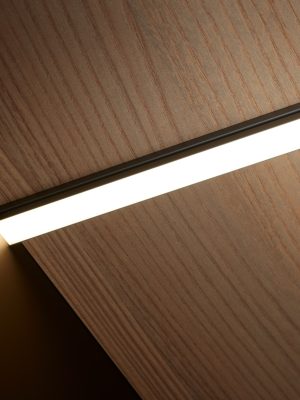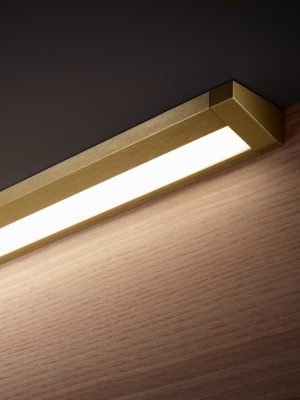If you are thinking about renovating your home, rearranging the furniture or installing more efficient lighting, there are many things you will need to learn in the process. Not only the styles you want for the renovation and the colors and textures you want to use. Something you will have to keep in mind is how to calculate the space for the renovations, furniture, lighting and so on.
Knowing how to calculate square footage will help you make better decisions. And no, you don’t need to be an expert to get it right, calculating the square footage of a room is not something exclusive to architects or interior designers.
If you want to learn how to calculate square meters correctly, in this article we explain it easily and step by step, so that there is no space that resists you.
What are square meters and why are they important?
Square meters (m²) are a unit of area measurement. They are used to find out how much space a given area occupies, whether it is the floor of a room, a wall or even a terrace.
Knowing how many square meters a space has is essential when:
- You are going to lay parquet or tiles and need to know how many boxes to buy.
- You are planning how many bulbs or lamps to install.
- You want to calculate how much it will cost to paint a room or put up wallpaper.
Basic tools for calculating square meters
You don’t need a professional arsenal. The following is enough:
- Tape measure: ideal for small spaces or simple shapes.
- Laser meter: more comfortable and accurate, especially if you are alone.
- Mobile applications: some apps use the mobile camera to measure distances. They are useful to get a general idea, but can fail if not used properly.
Practical tip: always measure twice and write down each measurement. If there are skirting boards or protrusions, it is better to take them into account from the beginning.
How to calculate square meters in a rectangular room
There is no trick here. If the room is rectangular or square, the calculation is very simple:
- Measure the length of the room in meters.
- Measure the width in meters.
- Multiply length × width.
For example: if a room is 5 meters long and 3 meters wide, the calculation would be:
5 × 3 = 15 m²
That’s all. You now know how to calculate square footage in rooms on a regular basis.
How to calculate square meters in irregular rooms
Things get a bit more complicated if the room has an irregular shape, such as an L-shape, or if it has columns. But it’s not the end of the world either:
- Divide the space into smaller parts that are rectangular or square.
- Calculate the square footage of each part separately.
- Add up all the surfaces to get the total.
For example: if you have an L-shaped space, calculate each section separately as if they were two rectangles. Then add them together. It’s that easy.
How to calculate square meters of walls
This is of interest if you are going to paint, tile or wallpaper. The method is similar to that of the floor, but taking into account the height:
- Measure the length of each wall.
- Measure the height from the floor to the ceiling.
- Multiply length × height for each wall.
- Subtract the area of doors and windows, if you want more precision.
A wall of 4 meters long by 2.5 meters high has:
4 × 2,5 = 10 m²
Do the same with each wall and add up.
How to calculate square meters to install flooring
When you install flooring, whether it’s parquet, laminate or tile, you have to be practical:
- Calculate the square meters of the floor as explained above.
- Add an additional 10% for offcuts, errors or defective parts.
For example: if the living room is 20 m², you should buy material for 22 m². This way you avoid missing just at the end. If you need decorating ideas you can see what the minimalist style is based on in our article on minimalist kitchens and trends to achieve a functional space.
How to calculate square meters to distribute lighting
Thinking about how to distribute the light points of the space is very important both for aesthetics and to improve visibility and sensations at home.
If you want to opt for a more modern and current aesthetic lighting, you can opt for LED lighting, which can be installed on furniture, ceilings or floors. Of course, for this you must take into account the square meters of the room.
- Calculate the square footage of the room.
- Depending on the use of the room, you need more or less light. It is measured in lumens per square meter.
An example
- Kitchen or bathroom: 300-400 lumens/m².
- Living room or bedroom: 150-250 lumens/m².
If your kitchen is 10 m², you will need between 3,000 and 4,000 lumens in total. From there you can decide how many bulbs, lamps or
Most common mistakes when calculating square meters
Even the most handyman can make some of these mistakes:
- Forget overhangs, columns or corners that take up space.
- Do not add safety margin in floors or coatings.
- Take measurements in centimeters and do not convert to meters.
- Do not check that the walls are really straight, especially in older houses.
Paying attention to detail can save you time and money.
Recommended digital tools to facilitate calculations
If your thing is mobile, there are apps that can help you:
- Measure (iOS and Android): uses the camera to calculate distances.
- Magicplan: allows you to make plans and calculate surfaces.
- RoomScan: ideal for obtaining a quick estimate of the area.
These tools can be useful as an adjunct, but are not a substitute for a good manual tape or laser meter measurement.
The importance of a good calculation in any renovation
Knowing how to calculate square footage is a basic skill for any renovation or space redistribution. Not only does it help you buy the right amount of materials, but it also improves planning and avoids last minute surprises.
A good measurement is the first step for your project, whether it’s changing the flooring or redesigning the lighting, to be successful. And if it gets complicated, you can always count on the help of a professional. But with this guide, you already have a head start.










































